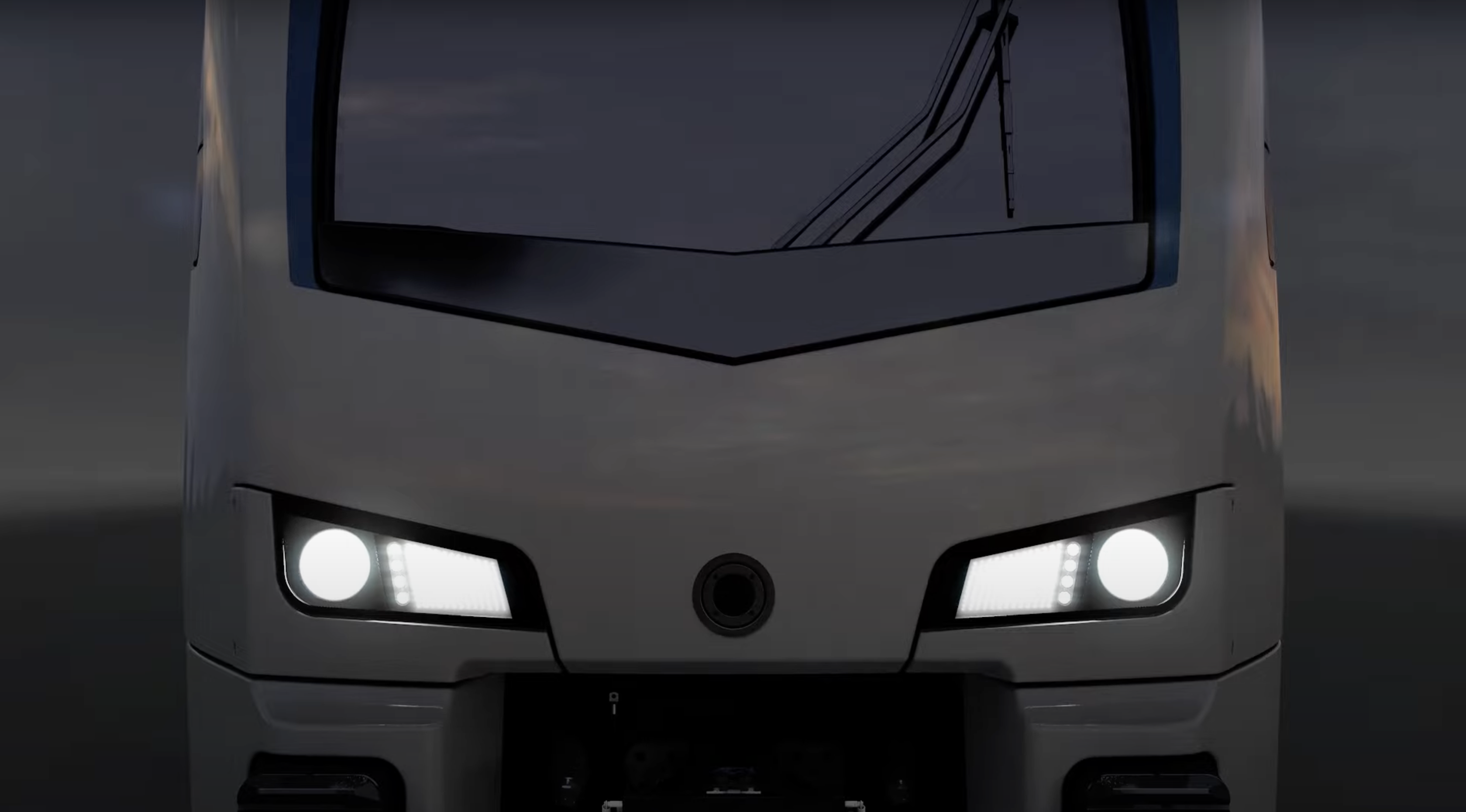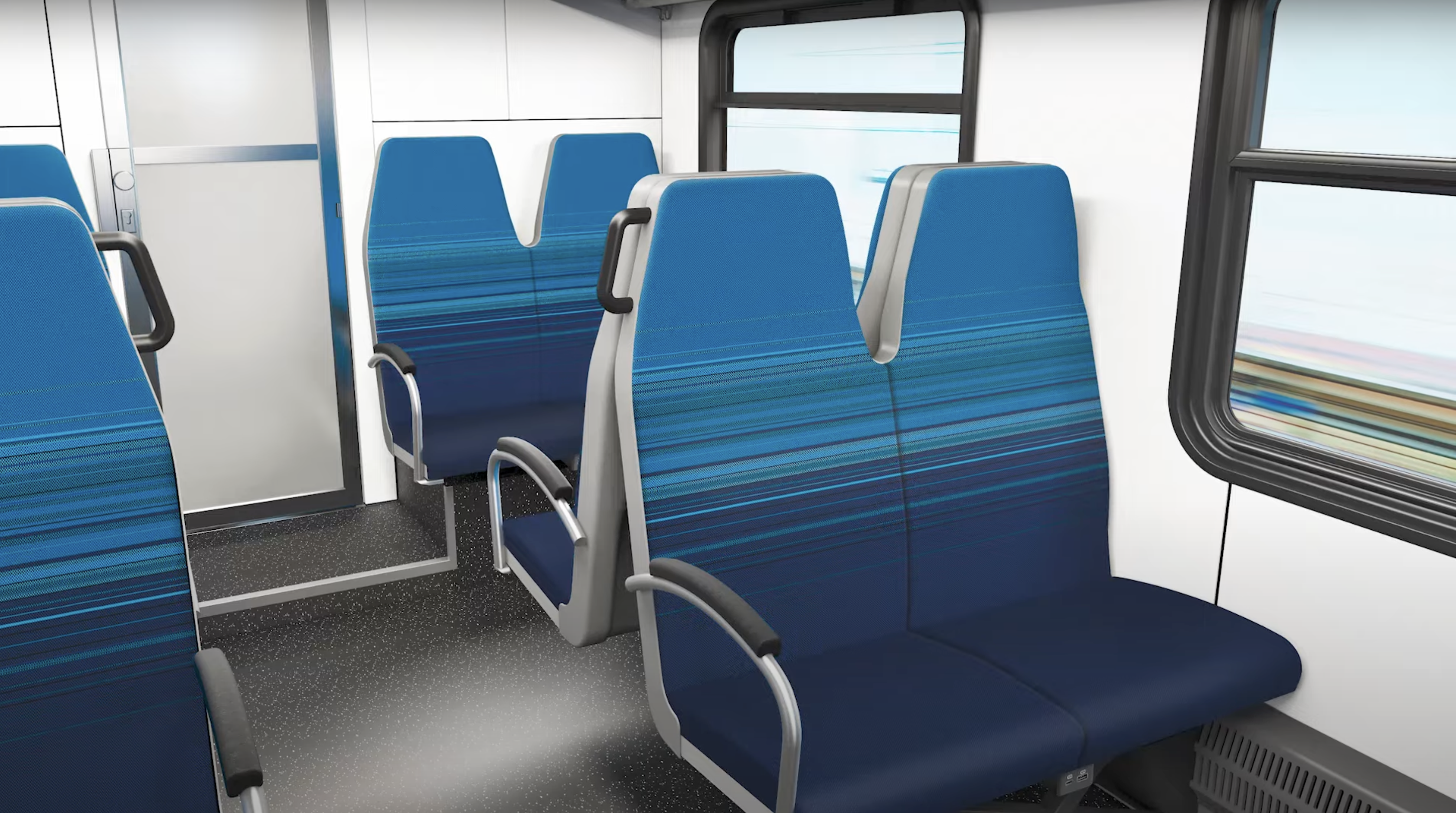Metra has taken a significant step towards adopting sustainable transportation by approving the purchase of battery-powered, zero-emission trainsets. This initiative, which was approved by Metra’s Board of Directors, positions Metra as one of the first in the United States to implement this technology.

Battery-powered Metra car. Rendering via Metra / Stadler US
The deal with Stadler U.S. includes a base order of eight two-car battery-powered trainsets, totaling $154 million, which covers design, training, and spare parts. According to Metra’s website, there is also an option to acquire up to eight additional trainsets and as many as 32 trailer cars. These additions could expand the capacity of the two-car sets.

Inside battery-powered Metra car. Rendering via Metra / Stadler US
The project is primarily funded by a $169.3 million federal grant from the Congestion Mitigation and Air Quality Improvement (CMAQ) program. The required 20% local match is being covered by additional funding from the state’s PAYGO program.
The trainsets will feature low-level boarding and lifts, in compliance with the Americans with Disabilities Act (ADA). Each two-car set will have a capacity of 112 seats, and there is an option to add trailer cars for additional seating. The trainsets will also be equipped with open gangways, digital information displays, bike and luggage racks, USB outlets, and some will include ADA-accessible bathrooms.
Slated for delivery between 2027 and 2028, these trains are anticipated to have a range of 45 to 65 miles on a full charge, with a recharge time of 20-30 minutes to achieve 80% battery capacity from 20%. Details about the charging infrastructure and its associated costs are currently still being considered.

Inside battery-powered Metra car. Rendering via Metra / Stadler US
Metra aims to deploy these trainsets on the Beverly Branch of the Rock Island Line, which runs between LaSalle St. and Blue Island, covering a route of 16.4 miles.
This acquisition allows Metra to phase out some of its oldest diesel locomotives and railcars that are beyond their useful life, thereby reducing carbon emissions. The procurement complies with Buy America requirements, with the final assembly of the trainsets being conducted at Stadler’s plant in Salt Lake City. Stadler has experience in constructing various types of trainsets, including electric, diesel-electric hybrids, and battery-powered models in Europe, as well as diesel engine gensets and hydrogen fuel cell models in the U.S.
Subscribe to YIMBY’s daily e-mail
Follow YIMBYgram for real-time photo updates
Like YIMBY on Facebook
Follow YIMBY’s Twitter for the latest in YIMBYnews


An amazing announcement and such a good use of the federal CMAQ funding program. Really great public transit truly is the best way to significantly reduce traffic congestion on streets and highways – better for everyone.
So the battery powered two car trainset, would replace one diesel engine? They would connect existing passenger cars to it?
The trainsets replace both the engine and the car. A trainset is an engine integrated into the car. It’s modular, but it will run independently of the old equipment.
I still don’t understand why they didn’t just elect to retrofit existing infrastructure to support conventional overhead electric units, unless they’ve not found a way to wrest control of the tracks from freight railways. Either way, this feels like a flawed attempt at fleet modernization, but I look forward to being proved wrong
Conventional overhead lines can be very expensive to install and maintain. While some lines being electrified are too long for these trainsets (like the South Shore Line), requiring conventional overhead lines, battery-powered vehicles may be more economical for Metra. I know several European countries are implementing them too.
In many developing countries, it’s about acquiring what’s the best and the latest and the most futuristic, in the most advanced country of the world, it’s about what’s the most economical.
Looks amazing, Stadler makes amazing trains, one question tho,- why the wheels are open like that? All of their trains in Europe have closed clean look 🤨
So if their range is 45-65 miles and the range of the planned route is 16.4 miles…. That gives them “in ideal situations “ 2-3 passes, then they re-charge. I’ve never understood why they don’t have inter-changable battery packs. Slide in slide out?